Providing an Inheritance to Children in Poverty
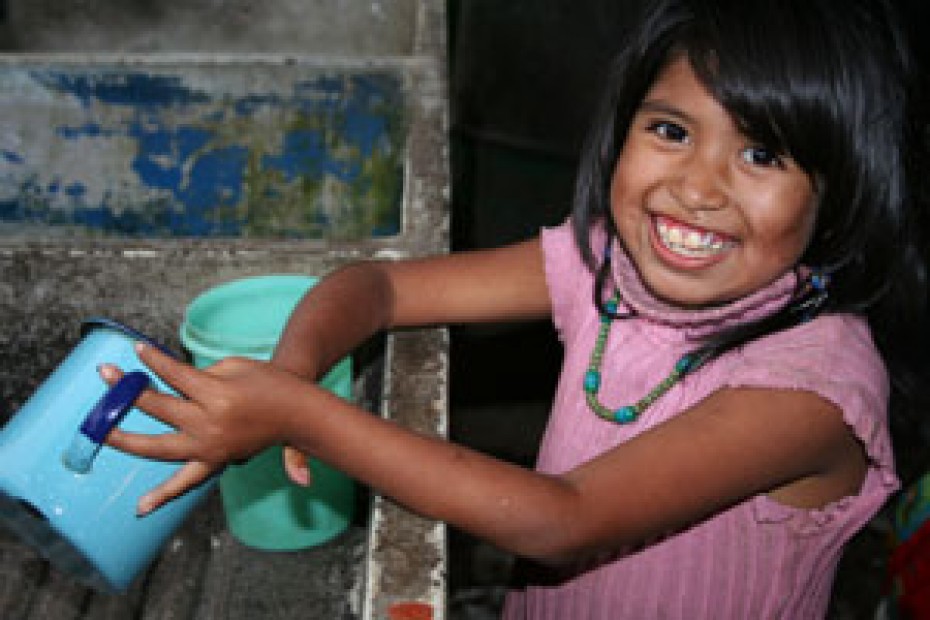
Mariana’s mother gathers the family around her at night to read a portion of the Bible and to pray together. She knows this is the best inheritance she could leave her children.
Continue Reading ›Run the Race in Such a Way as to Get the Prize
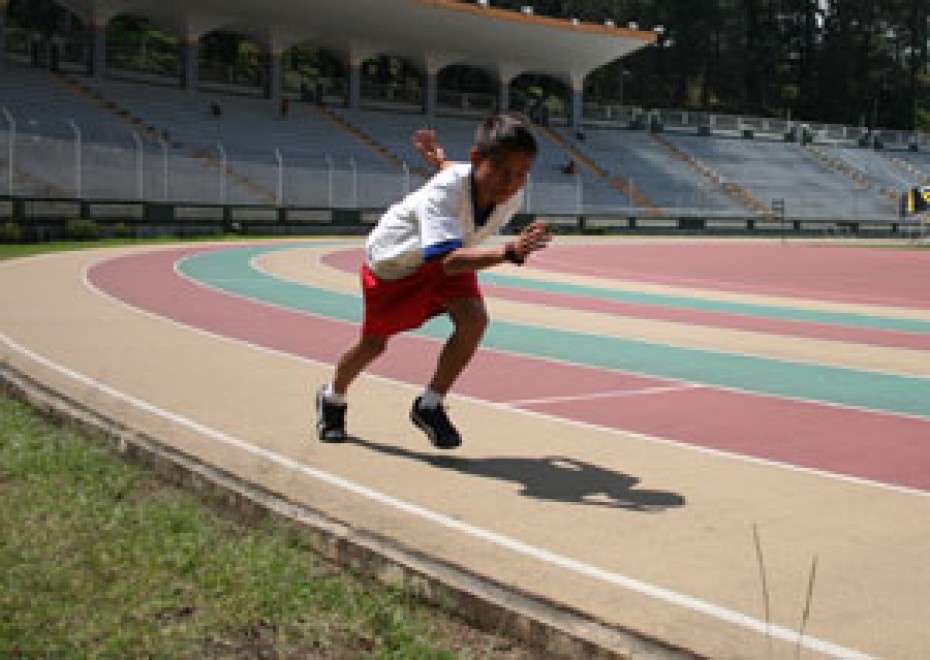
Sergio is confident enough to race and he knows he is a good runner. He has received many medals and recognition, but he knows how to keep both feet on the ground. He does not boast about himself. He knows that strength, wisdom and speed, in his case, are all gifts from God.
Continue Reading ›The Bible: A Great Birthday Present for Children?
Children in México’s most impoverished places do not normally get the joy of celebrating a birthday. In Centro de Desarrollo Integral Cordoba Child Development Center, as in many other student centers supported by Compassion, children are recognized and celebrated with singing and cake, making a difference in their self-esteem and value.
At the development centers, children receive the gift of being children, away from their lack of money and food, inside a small refuge where sadness and abuse are not present.
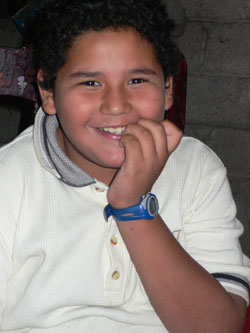 Pepe comes from a good family. His mother, Hilda, knows the Lord, but she came to the church when she and her husband were under much stress and struggles. Although the couple tried hard to stick together and to create a safe environment for their children, they used to fight over their lack of money.
Pepe comes from a good family. His mother, Hilda, knows the Lord, but she came to the church when she and her husband were under much stress and struggles. Although the couple tried hard to stick together and to create a safe environment for their children, they used to fight over their lack of money.
Hilda says she and her husband fought because they did not have enough money to eat. She recalls one day when they were yelling at each other and did not realize Pepe was hiding under the bed. They saw Pepe crawl up into the corner of the bed and pray, “God please give me much money so my daddy and mommy will not fight.”
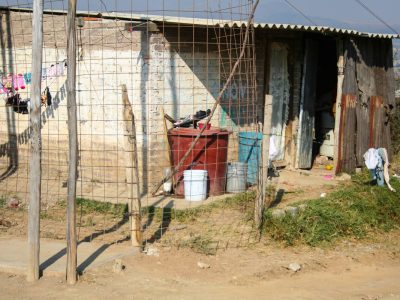
What Is Life Like for Mexico’s Suburban Poor?
Our child development centers are distributed in different types of settings in Mexico; the biggest difference is between urban and suburban areas. In the context of this blog post, the term “suburban” is defined a bit differently than in the developed world: Suburban areas are smaller cities or towns, normally located on the outskirts of main cities, with at least 5,000 inhabitants, but with few services.

What Is Life Like for the Urban Poor in Mexico’s Cities?
Our child development centers are distributed in different types of settings in Mexico; the biggest difference is between urban and suburban areas.
In the context of this blog post, the terms “urban” is defined a bit differently than in the big cities of the developed world: An urban area corresponds to small communities concentrated in cities with more than 10,000 inhabitants, with the majority of public services at hand.
Child Sponsorship: Life After Graduation
Tulancingo is located in a semidesert valley in central México. The view is beautiful and green with big cactus trees standing on the horizon.
The area of Tulancingo holds great history from the ancient Toltec and Otomi cultures. Although the inhabitants are mostly dedicated to farming and agriculture, a few other industries are also in the community. Their major products are dairy, meat, maize, barley and vegetables.
Tulancingo is the community where Proyecto Hormiga has worked with the support of Compassion México for more than 10 years now. They serve nearly 170 children from the community and have raised many children in their classrooms.
Most of the children here come from families with single moms or with parents who work either on the farm, as masons or in the nearby fields. The salaries are too small and the money earned to support the families is not enough.
The Compassion program has been a real blessing in the lives of these children; for most of them it means the opportunity to study beyond elementary school.
In the last year the student center graduated 15 teenagers in two different ceremonies where all families, children and staff recognized the success of these youngsters who have been considered “the pride of the program.”
We interviewed and visited some of them in their new activities. (more…)
Nine Questions With Cesiah Magaña
You asked your questions of Cesiah, field communication specialist in Mexico, and she answered. Take it away, Cesiah.
1. First of all, thank you so much for all you do for the precious children of Mexico! My question is, as you go through each day seeing a multitude of needs in these children’s lives, what do you find yourself praying for most often? (Lindy)
Most of the time, I pray for their hearts. My main prayer is normally that they get to experience the love of Christ. I long for them to know how precious they are to God. I pray that they never give in to the idea of not being worthy or good enough to do anything they dream of.
2. How far do the students travel, on average, to get to the centers and how do they do so? (Walk, bus, etc.) (Beth Ingersoll)
Most of the children registered live very near the churches where they participate in the activities and where they are registered. It is very common for them to walk. As part of the program, Compassion Mexico considers children within 30 minutes walking distance.
In some of the child development centers, it is common to see a few children ride their bicycles to the center, but in those cases it is only a luxury some can afford.
There are other churches where the pastor’s vehicle or the cars owned by the church membership serve to bring children to classes. Every time they drive by the community, children line up to jump in and ride to the church. Many times these are old cars on bumpy and dirt roads, but the fact of being able to ride with the teachers or sparing the hot sun is well worth the tightness.
Finally, there are centers where teachers and staff members split by areas, and they walk the streets around the center to bring children in. Families then trust their children to go with the staff members to church.
Either if children walk by themselves or in big groups or ride their bikes to the projects, they normally wear a special shirt from the project or even uniforms, so it is very nice to watch children come into the centers because they fill the streets with joyful laughter.
Ask the Field: Bangladesh and Mexico
 Remember Kamrul, the cycle van driver from Bangladesh you helped buy a cycle van for? Well, David Adhikary is the fine field communication specialist in Bangladesh who reported that story for us. That was one of his first assignments — he just started at Compassion Bangladesh in January. What a nice welcome you gave him!
Remember Kamrul, the cycle van driver from Bangladesh you helped buy a cycle van for? Well, David Adhikary is the fine field communication specialist in Bangladesh who reported that story for us. That was one of his first assignments — he just started at Compassion Bangladesh in January. What a nice welcome you gave him!
Now it’s your turn to ask David about his experiences as a Compassion employee, visiting precious sponsored children, and anything else you’re wondering about Bangladesh.
I’ll tell you a bit about him first. He just finished his electrical engineering degree in December of 2007 when he decided that he wanted to serve the Lord by working with Compassion’s ministry. (An engineer and a writer — talented guy!) He loves English and Bengali literature and is a big sports fan too.
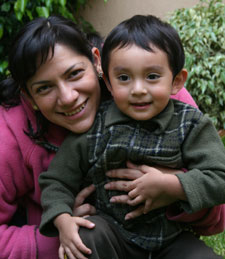 Remember when Chris went to Mexico? He got to meet Cesiah Magaña, who has been working with Compassion Mexico for seven years. She says the seven years have been wonderful — filled with blessings and challenges.
Remember when Chris went to Mexico? He got to meet Cesiah Magaña, who has been working with Compassion Mexico for seven years. She says the seven years have been wonderful — filled with blessings and challenges.
She currently works as the communication specialist, is married and has a precious 2 1/2-year-old son, Jair. She loves driving with her family to the towns around Mexico City, seeing their handicrafts and hearing their stories.
So it’s time to ask your questions of Cesiah and David. I’ll choose ten questions for each of them to answer.
The Poverty of ME
Last week, I was in Mexico. On a sponsor tour. And I saw the deepest, darkest poverty of my life.
But I didn’t have to travel to ME, the abbreviation we use when referring to Mexico, to see it. I only had to look at me.
I was in Mexico for the wrong reason. I didn’t go for the children, to become a stronger, more passionate voice for them. To serve them better. To serve you better. I went because I like to travel. I went for me.
There certainly are solid business reasons for me to have gone on the trip, but I didn’t get out of my own way long enough to realize them. I hate that.
How do I redeem the opportunity God gave me and that I squandered? (more…)
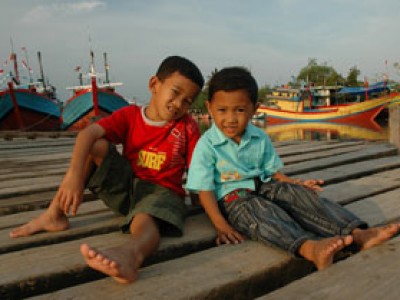
The Dignity of Work
I told you about my new neighbor, the Port-o-Let. One morning, a new big truck came pulling up outside my apartment, and this guy in a yellow vest hopped out.
Armed with a long hose, he proceeded to suck the contents out of the Port-o-Let. Quick as lightning, he hopped back in his truck and was off. Now he’s been showing up in his big green truck each week, happily performing his duty.
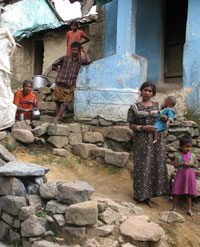 And it got me thinking. It’s easy for me to complain about the little parts of my job that bug me (like paperwork and deadlines and meetings). Watching this man gave me a new appreciation for my job. Not, by any means, that I think there is more dignity in what I do than what he does. I believe that there is dignity in the work that God has given each of us to do, no matter how our culture prompts us to view it.
And it got me thinking. It’s easy for me to complain about the little parts of my job that bug me (like paperwork and deadlines and meetings). Watching this man gave me a new appreciation for my job. Not, by any means, that I think there is more dignity in what I do than what he does. I believe that there is dignity in the work that God has given each of us to do, no matter how our culture prompts us to view it.
And learning more about the work others do around the world can give us a new perspective on our own work.
Ganesan, shown here with his family in front of his home in India*, works each day as a day laborer in other’s fields to feed his wife and two children.
Working as a day laborer is a common occupation of the parents of Compassion children, as most can’t afford to own land themselves and don’t have the education to seek other employment.
Ganesan earns about 450 Rupees a week for his work — about $10.
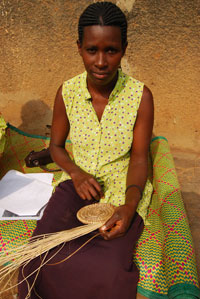
Resty is a proud mother of two in Uganda.
Her husband is an alcoholic, so a lot of the time she has to find ways to provide for her children by herself.
She hadn’t worked before, but through the Child Survival Program, she learned how to start a small business, selling charcoal by the roadside.
She gets about 20,000 Ugandan shillings a month selling charcoal — about $12.
She also learned to weave baskets through the CSP, and sells each basket she makes for about $1.
Ryan and Axl’s dads work as fishermen in Indonesia. (And, yes, that is as in Axl Rose. His dad liked rock music.)
Their fathers leave for the ocean on fishing expeditions and are gone from their family for six weeks at a time catching mackerel.
Each trip, they earn roughly 700,000 Indonesian Rupees — about $77.
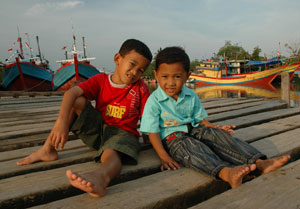
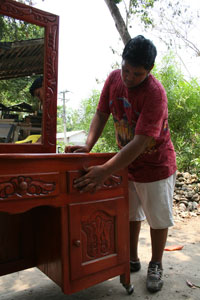 Where 17-year-old Ezequiel grew up in southern Mexico, the average worker earns $12 a week, working 20-hour days to harvest mangoes and bananas.
Where 17-year-old Ezequiel grew up in southern Mexico, the average worker earns $12 a week, working 20-hour days to harvest mangoes and bananas.
But Ezequiel’s dad is a carpenter who makes beautiful furniture.
At his Compassion child development center, Ezequiel learned how to carve wood, and together with their different skills, Ezequiel and his dad can make pieces like this dresser they just finished.
Once he graduates, a skilled woodworker like him can earn up to $55 a week, compared to the $12 of the day laborers harvesting mangoes.
In India, Suren and his wife, Rinu, both used to work full time in a brick factory. Suren lived in a dormitory at the factory, and Rinu would travel home each day to care for the family. Put together, they earned roughly 250 Indian Rupees a week — about $6 — for their family of six.
But Kajali (in the dark blue sweater) became sponsored, and her sponsors gave them a family gift, with which they bought a cycle van.
Now Suren earns many times over as a cycle van driver what he used to earn at the brick factory. When he was working at the factory and couldn’t provide a proper home for his family, Suren says, “as a parent, I felt worthless and of no good use.”
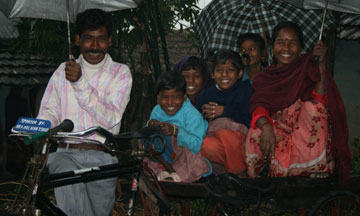
Those words tear my heart, and it’s sadly not the first time I’ve read the sentiment. How many mothers and fathers are out there, working so hard each day as farmers, drivers, and traders, scraping to provide just one or two meals for their children, and still feeling like failures?
Yet it’s so encouraging to know that even a small gesture can transform a family’s life. Suren is now filled with pride for the way he can care for his family. He says, “through Kajali and her beloved sponsor, we have now tasted of the goodness of God’s awesome power.”
<hr/ >
*NOTE FROM EDITOR: This content honors Compassion’s historical work in India. While we no longer have an India sponsorship program, we are grateful for the lives changed and meaningful work achieved through our sponsors and donors in our nearly 50 years there. For a detailed explanation of the end of our sponsorship program in India, please visit: compassion.com/india-update.
Experiencing God in Mexico
Hello everyone. This will be my last post from Mexico. I need to put the computer aside and experience God.
I’ve lost my way and made this trip about something other than Him.
I’ve uploaded another 50 photos to Flickr tonight. I’ll have more after August 23, when I return home.
I’ll also have some video of the welcome presentations at the two child development centers we visited today.
And I’ll have one more blog post.
At the Compassion Mexico Office
 We spent this morning at the Compassion Mexico office. After a brief introduction and welcome by Omar, the country director, our group of 30+ sponsors broke into three smaller masses, in order to get a little more intimate with the different ministry areas.
We spent this morning at the Compassion Mexico office. After a brief introduction and welcome by Omar, the country director, our group of 30+ sponsors broke into three smaller masses, in order to get a little more intimate with the different ministry areas.
First stop for “el grupo de Giovagnoni” was Ministry Services. We had a presentation from Cesareo in Finance. It was about the funding process for money to be granted and distributed to a child development center. It was in Spanglish. Cesareo said that, not me.
Next stop on the office tour, Sponsor Donor Services (SDS).
Here’s the 411 from the folks in SDS, with a little bleed over from Program Implementation, the stars who work with our church partners.
- Compassion Mexico has 129 child development centers in eight of Mexico’s 31 states. They help about 20,000 children.
- 79 percent of the 20,000 children are sponsored. 21 percent are waiting for sponsors.
- Chiapas is the poorest state in Mexico and has been for the past 20 years. It’s where most of Compassion Mexico’s work is done, and it’s where we’ll be until Thursday. Chiapas borders Guatemala.
- Last fiscal year, July 1, 2007 through June 30, 2008, Compassion Mexico processed 23,000 letters from sponsors.
- The staff estimates that 45 percent of sponsors write their children and the remaining children don’t receive any letters.
- In the last fiscal year, Compassion Mexico processed 51,000 letters from its children to their sponsors.
- Around 80 percent of Compassion Mexico’s sponsors are in the United States.
- The average number of children in a Compassion Mexico child development center is 160.
- Compassion Mexico expects to register another 5,000 children during this fiscal year.
- The Compassion Mexico office opened in 1976 and does not currently work with the Child Survival Program or Leadership Development Program – only Child Sponsorship and Complementary Interventions.
And here’s some additional info bling strictly from Program Implementation.
- The children in Chiapas are three times less likely to grow up healthy and to attend school.
- 90 percent of children in Chiapas don’t attend school regularly. They work as laborers.
After we left the Compassion Mexico office, the rest of our day was spent traveling – by bus from Mexico City to the Toluca airport and then from Toluca by plane to Tuxtla Gutierrez.
Adios for now.
Hope you don’t mind that this post has been search engine optimized for the keyword Compassion Mexico.


